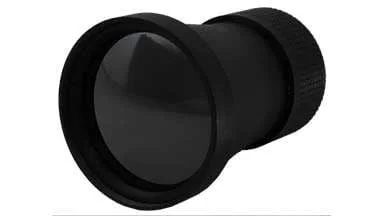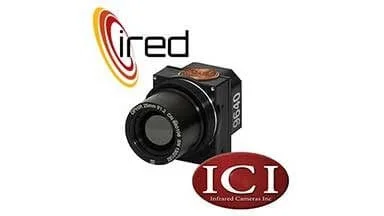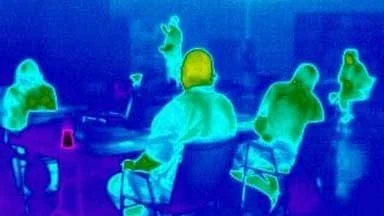Because of COVID-19, the world is now much more familiar with the benefits of infrared technology and their usefulness in screening body temperatures. Take a look at how Google searches for infrared thermometers skyrocketed in mid-March.
More and more people are opting for infrared thermometers because of their quick and precise temperature readings without requiring physical contact. With so many first-time owners of these no touch infrared thermometer devices, it’s important to understand how this technology works and the best way to use it.
Infrared Thermometers for Measuring Skin Temperature
Traditional mercury or digital thermometers are used by placing the instrument inside an object — most commonly, in your mouth under your tongue. Infrared thermometers, on the other hand, allow temperature to be measured without contacting the object (or your body) at all. When triggered, light bounces off the surface of the object and detects radiation emitted from the object. The thermometer then infers the temperature based on that electrical emission with impressive accuracy. For example, ICI’s non-contact thermometer has an accuracy of ± 0.3 °C / ± 0.5 °F. Depending on external circumstances, the thermometer can be as accurate as ± 0.2 °C / ± 0.4 °F.
It is important to note the distinction that these thermometers are measuring skin or surface temperature and not internal temperature. A high surface temperature could be caused by a fever, or it could be caused by sitting outside on a hot day. Think about the difference in internal versus surface temperature when cooking. Your steak might have a very high surface temperature from its direct contact on the grill, but its internal temperature may still be low and nearly raw.
How Does an Infrared Thermometer Work?
Liquid thermometers, commonly containing mercury, provide a readout when the liquid expands in response to heat. An RTD digital thermometer contains a sensor that computes temperature change. What distinguishes the IR thermometer is that it focuses infrared light at an object to detect and measure energy or radiation coming from its surface. The detector then translates the amount of electricity generated into a temperature reading.
How to Use an Infrared Forehead Thermometer
The process of obtaining an accurate measurement using an IR thermometer is simple, but proper usage is critical for obtaining the best results. For instance, where one points the no touch infrared thermometer matters. When measuring body temperature, the warmest part of the human body is actually located in the inside portion of the eye, and not on the forehead as many commonly believe. This is where you should point for the best infrared thermometer accuracy. Fun fact: This is the most accurate location due to a vein that runs directly from the heart’s aorta to the inner corner of the eye.
To safely take temperature in the inner canthus, follow these steps:
- The patient should be steady and not moving around.
- The patient’s eyes should close while the physician lines up the laster.
- Physician turns off the laser.
- Patient reopens his or her eyes.
- Physician takes the temperature.
Remember that these steps will need to be modified for those who are visually impaired or deaf.
Another consideration is that these infrared body thermometer instruments are meant to be used in close proximity. Reading the product guide to determine the ideal distance from the object is as important as the aim of the instrument. Distance to spot ratio differs among each device and means that calculated positioning is required in order to gain an accurate reading of the target area. Too much area outside of the desired target will affect the accuracy of the reading. For reference, ICI’s infrared thermometer requires the person screening to stand between 5-15 centimeters away from the target.
ICI’s Best Infrared Thermometer
Infrared Cameras Inc.’s HotSpot Non Contact Infrared Thermometer is a digital infrared thermometer that provides accurate and stable body temperature readings and has been deemed safe and effective. This portable powerhouse fits in a lab coat and has a data logger that allows it to store up to 32 readings and can be set to sound an alarm upon reading a specific temperature range.
Infrared technology, whether in the form of thermal cameras or thermometers, is an extremely efficient, safe, and helpful tool for measuring skin temperatures. While the advantages of IR thermometers make the technology very appealing, it is important to keep in mind that these tools are most effective in the hands of those armed with proper information and training. Contact us for more information about finding the perfect infrared products and technology for your needs as well as training and educational opportunities.






